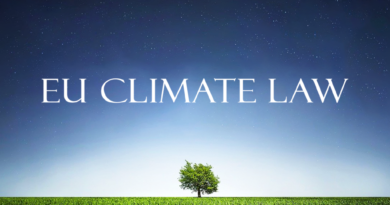
Energy System Integration: What role for gas infrastructure and renewable and low carbon gases?
Europe is placing the Green Deal at the core of a major recovery plan with the ambition to restore and rebuild but also to invest to prepare a more resilient, more sustainable and fair future.
Achieving this ambition triggers many challenges for the society in all of its dimensions and the Green Deal is built with the prospect of implementing a holistic approach ensuring a full contribution from all sectors. While these challenges are even more exacerbated by the recent crisis stemming from the Covid-19 pandemic, it also unveiled the critical role played by several sectors such as agriculture, industry and energy in the functioning of the society.
The forthcomings energy system integration strategy and hydrogen strategy of the European Commission are expected to deliver on this holistic approach.
GRTgaz is convinced that the gas infrastructure will be a key enabler of a deep decarbonisation of the energy system and some of the most high-emitting sectors. Gas infrastructure allows to integrate more renewable energy sources into the energy system while maintaining a high level of flexibility and security. In this respect, renewable and low carbon gases will play, together with electricity, a critical role to reach the EU’s decarbonisation and energy transition objectives in a smart and cost-efficient way.
Energy System integration: two sides of the same coin
Energy System integration entails two dimensions that need to be considered in a comprehensive way. On the one hand, the integration of networks or sector coupling which raises the question of optimised management of electricity and gas infrastructure. On the other hand, the sectoral integration underpinned by a concerted management of different sectors (mobility, industry, agriculture, waste, etc.) that raises questions regarding which energy sources and vectors are best suited to facilitate the decarbonisation of the various sectors implicated.
Gas infrastructure, across Europe, is already well developed. The history of European gas supply, based almost exclusively on imports, has led to the development of major trans-European corridors offering large capacities for energy transportation. To manage seasonal and daily flexibility of consumption without oversizing the networks, large storage capacities have been developed near consumption zones. Electricity infrastructure has been developed on a very different model, based essentially on facilitating national production, resulting in much lower interconnection capacities than gas grids. The growing integration of renewable electricity is thus challenging for the power system: congestion on the large transport and distribution networks (eg. SüdLink in Germany), increased flexibility needs as production methods and uses are evolving, absence of an electrical technical solution for seasonal flexibility, and long lead times.
A concerted approach to the development of the two infrastructures – a hybrid energy system – is likely to optimize the costs of developing networks and integrating renewable energies.
Numerous studies highlight the cost-effectiveness of a substantial role for gases alongside electricity in the transition, such as the study commissioned by the Gas For Climate consortium which indicates a cost difference of ca. €215 billion/annum between an optimised gas and a minimum gas scenario. Major investments have already been done into the European gas network with a view to ensure the security of supply making it resilient and strong enough to fully play a part in the transition as a connecter between energy carriers and sectors.
In France, the recent case of the Landivisiau power station exemplifies the benefits of this approach. The concerted analysis by the electricity and gas transmission system operators (TSOs), under the umbrella of the French Energy Regulator (CRE), made it possible to identify the strengthening of the gas network in Brittany as the most economically efficient technical solution, compared to the construction of a new electricity power line.
In the future, Power-to-Gas (P2G) could constitute a solution for managing excess electricity, produced by renewables and/or nuclear. With the massive development of renewable electricity and the reinforced push in favour of the electrification of certain variable uses over the year, it could constitute a flexible solution in the long term. Last February, our project Jupiter 1000, the first French power-to-gas demonstrator at industrial scale, injected its first hydrogen molecules in the grid.
Renewable and low carbon gases in sectoral integration
Developing the biomethane industry in France is a low hanging fruit considering the importance of Agriculture and Forestry sectors domestically. In addition to its economic benefits for the agricultural sector, biomethane perfectly illustrates sectoral integration. Biomethane can decarbonise the grid, reduce our reliance on imports while also contributing to the circular economy: reduction in chemicals used on farmland for fertiliser, providing an additional source of income for farmers, and improved waste management. Gas grids are ready today to transport large quantities of biomethane. Very limited adaptations of the network are required, such as the development of reverse flows from distribution grid to transmission grids to maximise biomethane injection.
Anaerobic digestion is today a mature process in France, with more than 139 biogas plants currently injecting biomethane into the gas grids, this represents over 2,5 TWh of capacity. We expect a strong growth in the coming years: more than 1100 projects are in the portfolio representing 25,1 TWh of capacity. Other technologies such as thermal gasification allow to convert waste (wood industry, solid recovered fuels) which would not fit into more traditional management channels.
Clean hydrogen is also poised to play a central role in reaching the Green Deal objectives, with a contribution that will probably not solely be limited to decarbonisation of hard-to-abate sectors.
While production of clean hydrogen is expected to develop in industrial clusters in the short term, its deployment at large scale depends to a great extent on the availability of an adequate infrastructure, to transport, distribute and store large quantities of hydrogen, connecting production areas to consumption as illustrated by 2*40GW initiative from Hydrogen Europe. Europe can actually re-use its well-developed gas infrastructure and convert part of it at reasonable cost to accommodate hydrogen. Such hydrogen backbone would allow to transport across Europe large amount of renewable H2, produced from solar and wind as well as low carbon hydrogen produced from fossil fuels combined with carbon storage solution, at a cost 10 times smaller than electricity transport.
For this purpose, French gas operators have established a roadmap for preparing stakeholders to accommodate hydrogen into the French energy mix and established technical and economic conditions for injecting hydrogen into natural French gas networks. GRTgaz is also working with Creos Germany on the MosaHyc project aiming at the conversion of an existing gas infrastructure to pure hydrogen. Mosahyc would make it possible to develop a hydrogen valley between Saarland Luxembourg and France fostering clean hydrogen in mobility and transport as well as for industrial applications. GRTgaz is also preparing its infrastructure to be “hydrogen ready” through several R&D initiatives such as Fenhyx, a R&D open platform for the futureproofing of grids and equipment in cooperation with the German TSO ONTRAS, and Hyblock Coating, aiming to develop an exclusive surface treatment for steel pipelines to protect them from impacts of hydrogen.
Leveraging the experience from biomethane development in France, some basic features can foster the uptake of clean hydrogen and other clean gases at European level. A science based taxonomy of renewable and low carbon gases and EU wide system for guarantees of origins would give legal clarity and visibility to consumer. Incentives to stimulate market development including quotas/targets, dedicated programs and support schemes will also ensure that technologies that are promising today reach maturity soon enough to fully contribute to the transition. Above all, an inclusive approach comprising all production technologies, and the adoption of a life cycle analysis for the calculation of the CO2 content are central to reap the full benefits they offer.
For infrastructure operators to support and play their part in the transition will require a flexible and forward looking legislation.
In this context, it seems relevant to explore an easing of some unbundling rules to allow them to engage in the development and operation of bioGNV refuelling stations, development and operation of biogas collection networks with a view to pooling its injection into the transport networks and achieving economies of scale. Scaling up hydrogen and paving the way for a liquid hydrogen market require a transparent and non-discriminatory access to the infrastructure operated and rules that should be inspired from the best practises and lessons learnt from electricity and gas.
We are at the very beginning of an exciting journey to shape a future integrated energy system that places Europe on a sustainable, inclusive and cost efficient path towards carbon neutrality. European Gas infrastructure is a strategic asset and it should continue to be considered has such. Spurred by research and development, new energy solutions and technologies are evolving rapidly. We at GRTgaz are already embracing this new reality. We see ourselves at the heart of the energy transition and key enablers of the future energy system. Now more than ever, we are both ready and committed to putting our infrastructure to good use in service of the energy transition.




